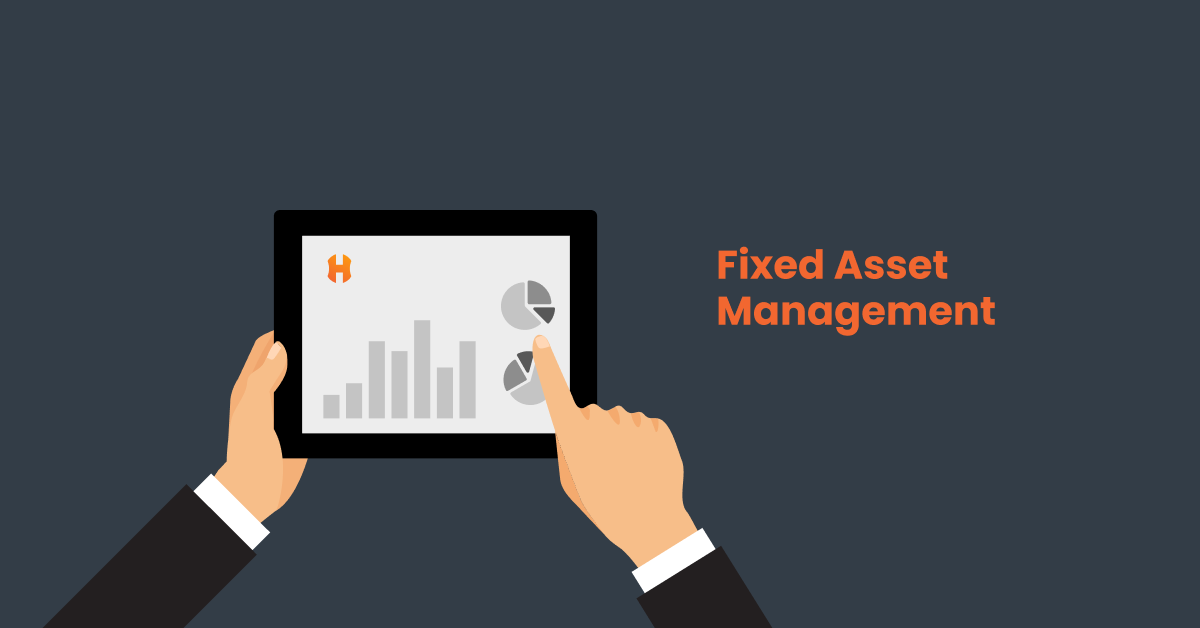Toy library software: 5 reasons to use Hector
Companies of all sizes have to deal with inventory management to ensure the efficiency of their departments and their business.
Read the article »Fixed asset management software allows an organization to track all of its assets while taking into account accounting and tax regulations.
This allows a company to run simulations with its fixed assets in order to better plan the impact of depreciation and amortization to consequently forecast its expenses.

Fixed assets are assets owned by a company that are used for long-term purposes and are not intended for resale.
These fixed assets represent potential economic value that is beneficial to the organization. Fixed assets are an integral part of accounting practices.
There are three main categories of fixed assets:
Intangible assets are non-monetary assets without physical substance that represent a benefit to the organization. This type of fixed asset includes assets such as software or patents.
Tangible fixed assets are physical assets owned by a company that can be used by said company or leased out to other organizations.
This type of fixed asset includes assets such as machinery, tools, equipment or land.
Finally, financial fixed assets are durable assets also owned by a company. For example, financial loans to associates for a period of more than one year.
For a company, it is important to track all of its assets with asset management software.
With fixed asset management software, an organization can have a clear picture of its fixed assets and their book value. It can also manage :
This allows the organization to apply the tax regulations in effect and to limit the risk of error linked to depreciation calculations, which are carried out manually
Depreciation is the allocation of the amount of a fixed asset over the total period of its use. This technique is based on the company’s use of an asset.
The length of time for which a fixed asset is operated is determined by the company so that it can provide a depreciation plan.
Depreciation allows a company to reduce certain costs and to know exactly when an asset needs to be replaced.
Depending on the size of your company and the inventory it has to manage, an accounting software program may be sufficient to manage the fixed assets and be able to properly balance the books.
On the other hand, to meet accounting and tax regulatory requirements, it is obvious that an asset management software can help you better track the status of your assets.
The fixed asset module that you find in an accounting software program is designed to meet the needs and problems encountered by accountants.
That type of software could not guarantee that all your assets listed are always up to date, unlike an asset management software which has this as its primary functionality.
In the long term, if the asset management is not up to date, it will have an impact on your company’s profitability.
You will not be able to keep tabs on what types of machines, devices or software are most used by your employees, nor will you be able to track assets that are lost, broken or even stolen.
From this point of view, an accounting software program may not be sufficient to produce your balance sheet.
It is a table that reflects the financial situation of the company.
It categorizes all of its assets into 4 types of items: fixed and current assets, short and long term debts. This provides a breakdown of what the organization owns and what it owes. This balance sheet must be produced once a year.
The objective behind the balance sheet is to keep track of all the fixed assets of an organization. For example, when a computer is purchased, its acquisition and depreciation value must be recorded in the fixed asset register until the end of its life cycle.
As we can see, an accounting software alone is not sufficient to keep track of the state of your assets. It is therefore a good idea to consider the option of implementing an asset management software program as a complement for your business.
If you are interested in seeing how a software like Hector could fill the gaps in your accounting software, do not hesitate to contact us!
Companies of all sizes have to deal with inventory management to ensure the efficiency of their departments and their business.
Read the article »Inventory management can be a daunting task when the right tools are used. A lack of strategy in inventory management can lead to overstocking or shortages. This article presents five tips for improving inventory management processes.
Read the article »Although computers are not perfect, they are far more accurate than any human. That’s why more and more companies are turning to scanners, also known as handheld barcode readers or barcode scanners, to manage their assets.
Read the article »